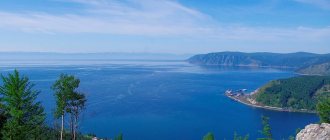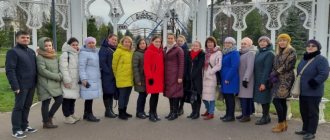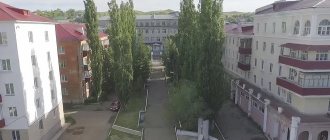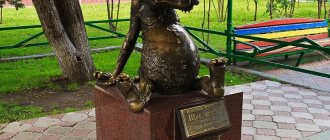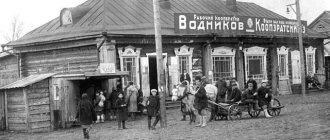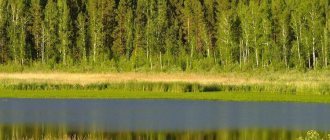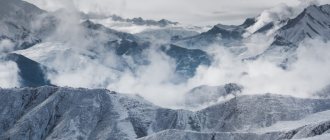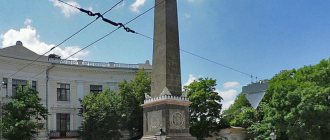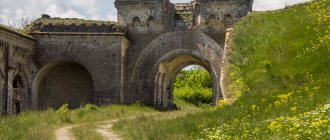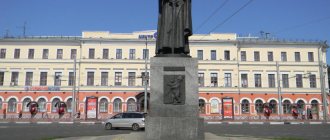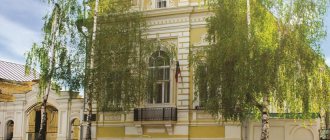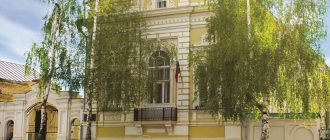Buryatia is a unique region of Eastern Siberia, indicated on car license plates with the numbers 04. Here you can walk the path of Genghis Khan, visit the land of sun and miracles, plunge into the deepest “well” of the planet, see areas of virgin nature or wander around the Russian capital of tea. Travel, get acquainted with ancient healing methods and even try them on yourself - a trip to Buryatia promises all this and more.
Buryatia. A little history
In ancient times, different peoples and tribes lived on the territory of present-day Buryatia. Hunting and fishing were the main activities during the Stone Age. Many ancient monuments, “deer” stones and drawings on rocks remain from the Bronze Age. At different times, the territory of Buryatia was dominated by the Xiongnu, Xianbi, Mongol-speaking Khitans, ancestors of the Tungus, Kurykans and others.
Since the 13th century, Buryatia was part of the Mongolian state. Russians settled the Buryat lands in stages:
- in the 17th century the Cossack pioneers came,
- in the XVIII-XIX - Old Believers,
- in the 19-20s - peasant migrants.
All of them brought brightness and originality to the culture of the region.
Since 1992, it received the status of a Republic, and two years earlier acquired sovereignty.
Language and religion
The population of Buryatia is multinational. Buryats speak Russian, Buryat (state) and Mongolian languages. There are many dialects spoken in different parts of the republic.
In the western part of Buryatia, people profess Orthodoxy, in Transbaikalia they adhere to Buddhism.
What holiday is it today?
09 February 2022, Wednesday
Today are holidays and events: Aeroflot's birthday International Dentist Day Memorable date in Russian military history: The feat of the cruiser Varyag Tomorrow: Diplomat's Day
Today is an Orthodox holiday: Transfer of the relics of St. John Chrysostom, Archbishop of Constantinople... Tomorrow: St. Ephraim the Syrian. Venerable Ephraim of Novotorzhsky. Venerable Ephraim of Pechersk, Bishop of Pereyaslavl. Venerable Theodosius of Totem, the head and founder of the Spasosumorin monastery...
Today is a national holiday: Chrysostom's Fire... Tomorrow: Ephraim's Day...
Seasons
Seasons, four periods of the year (spring, summer, autumn and winter) characterized by certain average temperatures. The period during which the Sun passes through one of these sectors is called the season. Spring in the Northern Hemisphere and autumn in the Southern Hemisphere begin when the Sun passes through the initial circle of declination and its right ascension is 0° (vernal equinox). Summer in the Northern Hemisphere and winter in the Southern Hemisphere occur when the sun's right ascension is 90° (summer solstice). Autumn in the Northern Hemisphere and spring in the Southern Hemisphere begin when the sun's right ascension is 180° (autumnal equinox). The beginning of winter in the Northern Hemisphere and summer in the Southern Hemisphere is considered to be the winter solstice, when the direct ascension of the Sun is 270°... Next: Seasons. Russian folk calendar. Monthly words...
Buryatia. Districts
The Republic of Buryatia is part of the Russian Federation. In addition, it is part of the Siberian Federal District. The administrative center is the city of Ulan-Ude.
The territory is dominated by a sharply continental climate. In this regard, the winter period here is cold, almost snowless. Spring in this area is windy. This time of year is characterized by frost and low rainfall. The summer season is very short, the days are hot and the nights are cool. The greatest amount of precipitation falls between July and August. Autumn is most often long and warm, without sudden changes in temperature.
Buryatia. Map (The dotted line indicates the borders of the republic on the map)
The average summer temperature in Buryatia is +19C, in winter the average temperature is -22C. About 244 mm of precipitation falls annually. The local population is 971,391 people. Population density indicators are 2.76 people per 1 km2. Slightly more than half of the population (58.84%) lives within the city.
Regions of Buryatia:
1. Barguzinsky district - the village of Barguzin 2. Bauntovsky district - the village of Bagdarin 3. Bichursky district - the village of Bichura 4. Dzhidinsky district - the village of Petropavlovka 5. Eravninsky district - the village of Sosnovo-Ozerskoye 6. Zaigraevsky district - the village of Zaigraevo 7. Zakamensky district - city Zakamensk 8. Ivolginsky district - the village of Ivolginsk 9. Kabansky district - the village of Kabansk 10. Kizhinginsky district - the village of Kizhinga 11. Kurumkansky district - the village of Kurumkan 12. Kyakhtinsky district - the city of Kyakhta 13. Muisky district - the village of Taksimo 14. Mukhorshibirsky district - the village of Mukhorshibir 15. Okinsky district - the village of Orlik 16. Pribaikalsky district - the village of Turuntaevo 17. Severo-Baikalsky district - the village of Nizhneangarsk 18. Selenginsky district - the city of Gusinoozersk 19. Tarbagataysky district - the village of Tarbagatay 20. Tunkinsky district - the village of Kyren 21. Khorinsky district - the village Khorinsk
Administrative-territorial division of the Republic of Buryatia Map by region
Buryatia is located in the central part of the Asian continent, occupying part of Eastern Siberia. The republic has borders with the Irkutsk region (north and west), with Mongolia (south), with the Republic of Tyva (far west), with the Trans-Baikal Territory (east).
Cities and towns:
- Ulan-Ude
- Ivolginsk
- Severobaykalsk
- Gusinoozersk
- Kyakhta
- Selenginsk
- Zarechny
- Zakamensk
- Onokhoy
- Bichura
- Taximo
- Khorinsk
- Petropavlovka
- Kamensk
- Ust-Barguzin
Folk calendar about every day
Every day one season always replaces another and this determines a person’s way of life. In connection with this, a folk calendar was formed in which there were practically no nameless, unmarked days. Every day was special, had its own purpose. All this was determined by climate conditions and astrological phenomena.
A calendar is a system for counting periods of time. The first calendars arose a long time ago, in ancient times, because there was a need to measure time. The word calendar comes from the Latin words caleo - to proclaim and calendarium - debt book. This is due to the fact that in Ancient Rome the beginning of each month was especially proclaimed, and because it was customary to pay debts on the first day of the month. Different peoples counted time differently. Some calendars are based on the changing phases of the moon - lunar calendars; in others - the change of seasons - sunny; in others, the length of the year was coordinated with the change of seasons, and the counting of months was associated with the phases of the Moon. Such calendars are called lunisolar.
In Rus', the calendar was called a monthly calendar. Every day, the month book covered the entire year of peasant life, “describing” day by day, month after month, where each day had its own holidays or weekdays, customs and superstitions, traditions and rituals, natural signs and phenomena. The cyclical nature of the calendar is reminiscent of human life, where spring is youth, summer is heyday, autumn is the time of harvesting fruits (it’s good if there are some, otherwise you can live your life without collecting fruits), winter is the time of wisdom and peace. This cyclicality and rhythm determined the way of life of the farmer. The folk calendar was an agricultural calendar, which was reflected in the names of the months, folk signs, rituals and customs. Even the determination of the timing and duration of the seasons is associated with real climatic conditions. Hence the discrepancy between the names of the months in different areas... Next: Folk calendar...
Cities of the Republic of Buryatia
Ulan-Ude is the capital of the republic, population - 416,079 people. Previously, the city was called Verkhneudinsk. In 1666, the Udinsky fort was built. Situated on the tea route, the city became a major trading center where wholesale fairs were held. The city developed and grew rich. Now Ulan-Ude is a large industrial, commercial, scientific, cultural and tourist center of Eastern Siberia. Mechanical engineering is developed in Ulan-Ude, and the equipment produced here is one of the most advanced. These are An, Mig, Su aircraft, as well as Mi-171Sh helicopters. Ulan-Ude is also an important tourist center, one of the historical cities of Russia since 1990.
Severobaikalsk (25 thousand people) is the second largest city in the republic. Its construction is connected with the Baikal-Amur Mainline. The settlement, founded in 1974, was to become one of its main points. When the construction of the BAM was completed, it turned out that no one needed the highway, and the city began to decline, and its population began to decline at a catastrophic speed.
Gusinoozersk (24 thousand people) is the third largest city in the republic, founded in 1939. The city would be unremarkable if it were not for Goose Lake, after which it is named. Near this lake is the Gusinoozersky datsan, a Buddhist monastery.
Fishing calendar for every day
The fishing calendar should not be taken as an absolutely indisputable truth. Fish biting is greatly influenced by a whole range of natural factors, as well as the influence on the nature of man himself. You must not forget that the fish’s bite depends and is determined not only by the calendar dates and biological cycles of their life, reflected in the calendar, but also, no less, by the state of their habitat; the bite also depends on weather conditions: air and water temperatures, cloudiness, wind direction and strength, etc... Next: Fishing calendar...
Orthodox calendar about every day
Orthodox calendar: Orthodox, Church and Christian holidays.
The church year is an alternation of weekdays and holidays. On weekdays, a person is called to work “by the sweat of his brow to earn his bread.” Holidays are given in order to feel liberation, to rise above the bustle and routine of the world, to feel involved in the highest of worlds, “where there are no illnesses, sorrows and sighs, but endless life.” Since ancient times, holiday cycles have been associated with the seasons. The pagans associated them with the worship of the forces of nature, the cult of which in the Old Testament was replaced by gratitude to the Creator for the universe. And although the connection between holidays and the seasons has not completely lost its power, since God is present in everything, in the plant and animal world, in human works, it nevertheless faded into the background, giving way to a spiritual foundation built on the Sacred Scriptures. The history of Orthodox holidays dates back to the times of the Old Testament. Each of the Orthodox holidays is dedicated to the remembrance of the most important events in the life of Jesus Christ and the Mother of God, as well as the memory of saints... Next: Orthodox calendar...
Geography
Buryatia is located in the southern part of Eastern Siberia. It neighbors the Republic of Tyva, the Chita and Irkutsk regions, is washed by the waters of Lake Baikal and borders Mongolia.
Ulan-Ude is the capital of the Republic of Buryatia and at the same time the largest city (just over 400 thousand inhabitants). Smaller cities are Severobaikalsk and Gusinoozersk.
Interesting places in Buryatia
Buryatia is one of the most interesting regions of Eastern Siberia. Here you can learn about centuries-old culture, relax, heal, and be alone with pristine nature. There are about 300 natural monuments and many attractions in the republic.
The brightest is Lake Baikal. In Siberia it is called the sea. About 9 thousand rivers carry their waters into this reservoir. Baikal contains most of the fresh water reserves, which is why it got the name well.
Not far from Lake Baikal on the Osinovka River there is a picturesque five-meter-high waterfall. A notable place in Buryatia is the city of Kyakhta. The pearl of the tea route. A couple of centuries ago – the richest city in Russia.
An interesting place is the Baikal Nature Reserve, which is inhabited by a huge number of wild plants and animals.
There are many sacred places of different tribes and peoples in the Barguzin Valley. One of the main ones is Mount Baraghan. Orthodox churches and Buddhist datsans were built on it.
No less exciting are excursions to the Dzherginsky State Nature Reserve, the Tunkinsky Valley, the Transbaikalsky and Tunkinsky National Parks, and the Shumaksky Nature Reserve.
Buryatia is rich in mineral waters, medicinal mud and springs.
Russian folk calendar for every day
The word “sign” comes from the word “notice”, i.e. observe. As a result of observing what happens around a person every day, he accumulates life experience. This knowledge was passed down from generation to generation, carefully preserved and people trusted it as a sacred book. Many signs have come to us from the depths of centuries without losing their knowledge. Each of us is free to choose: to dismiss all this as an absurd superstition or to take a closer look at the signs and take the centuries-old experience of generations more seriously. Most of us, when taking exams, ask them to scold them, boasting about some kind of good fortune or luck, spit so as not to jinx them or knock on wood, take a detour if a black cat crossed the road, are afraid of the number 13 and much more. And who among us does not have lucky things, numbers? Who has never resorted to the help of fate at least once in their life, who has not believed in secrets? It’s as if everything connected with signs is hidden somewhere deep in our subconscious. Often we remember them mechanically, unconsciously, or just as a joke. But, undoubtedly, the signs contain a lot of accurate knowledge and practical wisdom of our ancestors. They cover all the characteristic, often difficult to perceive, natural phenomena. Signs have preserved a lot of what was in old folk holidays and customs; they help predict the weather, grow crops... Next: Folk signs...
Ulan-Ude
Video: Ulan-Ude
Basic moments
The summer tourist season in Ulan-Ude is short. The most comfortable weather for visiting the city is in June-July. And getting here won’t be difficult, because the capital of Buryatia is connected to major Russian cities by air and rail.
A walk along the cozy central streets of Ulan-Ude transports tourists to the second half of the century before last. But today, in the restored low-rise buildings of the old provincial town, the windows of boutiques, branded stores and cafes, fashion salons and art galleries sparkle. The busiest neighborhoods are located in the center, some streets are closed to transport, and the pedestrian promenade is called the Buryat Arbat. Here, a good mood is created by original street sculptures, cozy taverns and restaurants serving original dishes of Buryat national cuisine. However, in Ulan-Ude you can easily find establishments serving European, Chinese or Japanese cuisine.
In the capital of Buryatia, there are more than two hundred objects of urban planning and cultural heritage, there are interesting museums, a philharmonic society, a circus, and several theaters. Exotic pagodas and ritual drums remind us that Ulan-Ude is the center of Tibetan Buddhism in Russia. Monasteries-datsans have been restored in the city and in its picturesque mountainous surroundings, and there are religious educational institutions and art schools there. After many decades of prohibitions, shamanism, an ancient religion dating back to the origins of nomadic civilizations, has also been revived.
The primordial traditions of hospitality inherent in the Buryats are felt in the friendly manners of local guides and the smiles of the staff of numerous hotels and restaurants in the city. Many of these young people are graduates of the prestigious Baikal College of Tourism and Service, located in Ulan-Ude.
History of Ulan-Ude
The foundation of Ulan-Ude dates back to the middle of the 17th century. It is known that during the reign of Alexei Mikhailovich, the father of Peter I, a detachment of servicemen of 50 sabers, led by Gavrila Lovtsov, went to the confluence of the Uda and Selenga rivers. In 1666, on a high cliff near the crossing, the Cossacks built the Udinsky fort, intended to collect tribute from the “Mungal” peoples who inhabited the surrounding area. They professed Lamaism, a branch of Tibetan Buddhism, and an even more ancient belief - shamanism. There were no state borders in this region at that time; nomads moved freely from Lake Baikal to the provinces of China and the Gobi Desert in Central Asia. The fortress controlled the route to Dauria - that’s how the lands in the Selenga basin and Transbaikalia were then called. The Great Tea Route from China also ran here.
Already in 1690, the strategic citadel expanded significantly and joined the list of cities of the empire, first receiving the name Udinsk, and over time - Verkhneudinsk. The ambassador of Peter I to the Chinese Emperor, passing here in 1692, wrote in a report: “The city is considered the key to the Daurian provinces.”
The places here were remote and wild. There were few people willing to voluntarily move to Dauria from Russia. The tsarist government sent here fugitive peasants, schismatic Old Believers and “objectionable freethinkers,” conspirators and outright rebels, among whom were the Decembrists, who left vivid memories of these lands. One of them, a demoted naval officer and aristocrat Nikolai Bestuzhev, collected Buryat legends, fairy tales and songs into a book, and captured the surrounding landscapes in paintings. He was keenly interested in the philosophy of Buddhism and became friends with Hambo Lama Gomboev and married a Buryat woman, Dulma Sabilaeva. Bestuzhev’s daughter married the son of Hambo Lama, who served in China as the head of the telegraph service at the Russian embassy in Harbin. This is just a small touch to the centuries-old intertwining of the destinies of Russian and Buryat families, the interpenetration of such dissimilar national cultures of the two peoples.
In the vicinity of Verkhneudinsk, reserves of iron ore, gold and other minerals were explored. In the 18th-19th centuries, industry and trade developed rapidly here, new streets were laid in the city, stone churches, beautiful public and residential buildings, shops, and hotels were built. Verkhneudinsk became famous for its rich fairs, which attracted merchants from all over the Far East, China and Mongolia. Banks and trade missions operated here. In 1878, there was a fire in Verkhneudinsk, most of the historical wooden buildings were destroyed by fire, but the rich city, located at the crossroads of important trade routes, was quickly rebuilt. A railway line was built here in 1899, a power station appeared at the beginning of the last century, wealthy townspeople brought the first cars from abroad.
With the fall of the Russian Empire in 1917, Verkhneudinsk found itself at the very center of the civil war in the Far East. In the spring of 1920, after the death of the White Guard Admiral Kolchak, recognized by the monarchists as the Supreme Ruler of Russia, a political vacuum formed in the region. A Constituent Assembly was convened in Verkhneudinsk, which proclaimed the creation of a Far Eastern Republic independent from Bolshevik Russia. Verkhneudinsk was chosen as its capital. A few months later, the Amur region, deprived of central authority, joined this quasi-state. As a result, the Far Eastern Republic extended over a vast territory from Transbaikalia to the Pacific Ocean, and in the fall of the same year the capital was moved to Chita. In 1923, the civil war ended with the victory of the Red Army. Soviet power was established in Verkhneudinsk, and the city became the capital of the Buryat-Mongolian Autonomous Republic within the USSR.
In 1934, Verkhneudinsk, located on the banks of the Uda River, was renamed Ulan-Ude, which means “Red Uda” in Buryat. The construction of large enterprises began in the city, a river port, scientific centers and educational institutions appeared. During the first five-year plans, Ulan-Ude became a major industrial and cultural center of the Far East, but during the Stalin era, tragic pages were also written into the history of the Buryat capital. Here, traditional religious cults and ancient folk beliefs were eradicated with an iron hand, ancient Buddhist monasteries, sanctuaries of shamanism, Christian temples were destroyed, and clergy were repressed and shot. In the 30-40s, the headquarters of the Yuzhlag, a system of forced labor camps, was located in Ulan-Ude.
During the Great Patriotic War, important defense factories and hospitals for soldiers wounded at the front operated here. In 1958-1992, the city had the status of the capital of the Buryat Autonomous Soviet Socialist Republic. After the collapse of the Soviet Union, Ulan-Ude received the status of the capital of the Republic of Buryatia, included in the Far Eastern Federal District of Russia.
Geography and climate
Ulan-Ude is located in a rocky and hilly valley, squeezed by mountain ranges, and is a narrow intermountain depression stretching from the northeast to the southwest. The city was built at the confluence of the Uda River, which gave it its name, into the deep Selenga, the main tributary of Lake Baikal. The terrain of Ulan-Ude is hilly, the streets run down from the mountainous neighborhoods to the low-lying parts of the development, and then climb up the hills again. In recent decades, the capital of Buryatia has grown and become the center of an agglomeration, which includes four suburban districts with villages. The city's population exceeds 435,000 people.
There is a road bridge across the Selenga that leads to the airport. This crossing is part of the Baikal federal highway. Two more road bridges cross the riverbed of the Uda, and residential areas rise on both banks of the river. Part of the urban development has stepped onto the river islands. The third bridge over the Uda is a railway bridge, along which the rails of the Trans-Siberian Railway are laid.
The city is located in a zone of sharply continental steppe climate. The impact on the local climate of the not so far located vast Baikal is excluded by the high mountain ranges separating the lake from the valley in which the city is built. Summers in Ulan-Ude are short and quite hot, while winters are long and frosty. Winter comes here for almost six months, brought by the Siberian anticyclone. It gets very cold already in October; from December to February the thermometers often drop to –27…–24 °C. During the period of meteorological observations carried out here since 1892, the record low temperature was –54.4 °C. This happened on Christmas night from January 6 to 7, 1931.
The first thaws come in early April, but spring weather is extremely unstable, with wet snow even in May. The short summer season either pampers citizens and tourists with sunny weather with an air temperature of +18...+26 °C, or upsets them with cloudy rainy days. Most of the dry and clear days occur, as a rule, in June and July. There are also abnormally hot days in Ulan-Ude. Thus, June 2010 brought unprecedented heat, when street thermometers rose to +40 °C. In August it becomes rainy, heavy precipitation is brought here by eastern cyclones that arise over the Pacific Ocean.
Sights of Ulan-Ude
Guests of Ulan-Ude entering the city from the airport via the Selenginsky Bridge are greeted by the “Hospitable Buryatia” monument. The figure of a friendly woman hands the arrivals a hadak - a scarf with an image of a deity, symbolizing in the Buddhist tradition the joy of a pleasant meeting with friends and the hospitality of the owners of the house. By the way, khadak is one of the elements of the republic’s coat of arms. Another noticeable monument from a distance can be seen on a high cliff on the right bank of the Uda River. Here, in memory of the Cossacks who founded the Udin Fortress on this site, a memorial stone cross was erected.
Local guides begin walks with tourists around Ulan-Ude from the building of the capital's Main Post Office, on the corner of Lenin and Sukhbaatar streets. A bronze hemisphere decorated with artistic casting is installed here. This is a symbolic designation of zero kilometer. The main city square stretches here, surrounded by administrative buildings, and the opera house and philharmonic are located here. In the eastern sector of the square, a pedestal has been erected on which stands the colossal head of Lenin. The height of the monument is 7.7 meters, and its weight is 42 tons. Guides claim that this is the largest portrait bust of a leader in the world.
In 2011, a beautiful color and musical fountain was built in front of the opera house. The fountain's sound repertoire includes classical works. The jets dance to the rhythm of the music, and in the evenings the multicolor lighting turns on. At the entrance to the theater there is a sculptural composition “Beauty of the Angara”.
Part of Lenin Street with ancient buildings has been turned into a pedestrian promenade. Here flower beds delight the eye, in houses of the 19th century. There are cafes and shops, the street is decorated with monuments and sculptures. Near the building of a former hotel, built in the 70s of the 18th century, there is a bronze Verkhneudinsk merchant, in his hand he has a chest with capital. Thanks to the people of this class, prosperity came to the provincial city of the Russian Empire, and grateful descendants remember this. There is a slot in the merchant's chest. Place a coin there and call on the merchant's ingenuity in money matters.
The formation of the architectural ensemble of the ancient Bazar Square began with the solid stone house of the merchant Titov, built in 1795. Nearby is the Gostiny Dvor with through passages, arcades and columns. Construction of this complex began in 1804 and continued for several decades: wealthy businessmen added new rows to the popular shopping center. For more than a hundred years, fairs “with a fair amount of bargaining” and public entertainment were held here. Trading traditions do not fade away today; here is the Central Department Store and shops, fashion studios, cafes. In 2002, a chapel was erected near Gostiny Dvor in the name of the royal passion-bearers of the Romanovs.
On Lenina Street, 2, there is a wonderful architectural monument of Russian Baroque - the Holy Hodegetrievsky Cathedral, founded in 1741. The temple is considered the oldest stone building in the city. There are several more Orthodox churches in Ulan-Ude. One of them, the Holy Trinity, stands nearby, in the city garden. This temple is also of very respectable age; its construction began in 1798.
Between the Holy Hodegetrievsky Cathedral and Kommunisticheskaya Street there is a monumental building of the former gendarmerie administration, erected in 1880. Now it houses the Center for Oriental Medicine. By the way, a unique ancient Atlas of Tibetan healing is kept in Ulan-Ude. They say that Buryat folk healers, who pass on ancient knowledge from generation to generation, are able to restore health to the most hopeless patients.
Entire blocks of buildings characteristic of the urban architecture of Verkhneudinsk of the century before last have been preserved in the historical center of the city. Here are the houses of wealthy citizens of that time. All of them are well restored and look attractive. The estates of the merchant Chernykh and the tradesman Butyrin were built from darkened wood. The window casings and plank cornices of these buildings rest on figured brackets and are decorated with elegant saw-cut carvings. Wooden buildings alternate with brick mansions, decorated with classical friezes and stucco on the facades. At the corner of Pochtamtskaya and Nekrasova streets, a two-story building with a turret, known as the Old Post Office, attracts attention. At the beginning of the 20th century, the postal and telegraph service was located here.
The appearance of the central streets of Ulan-Ude is formed by buildings erected in different architectural styles. In 1904, the building of the Institute of Oriental Languages was built in the Art Nouveau style. The trend of constructivism, fashionable in the 20s of the last century, is embodied in the appearance of the House of Soviets. And to the pompous building of the former regional committee of the All-Union Communist Party of Bolsheviks, built in the Stalin era, the architects gave the features of eclectic pseudo-classicism - the facades are decorated with columns of the Corinthian order, Roman arches and porticoes, and decorative obelisks. Now the People's Khural of the Republic of Buryatia and the administration of the President of the Republic are located here.
Museums
On pedestrian Lenin Street, 26, in the elegant house of the merchant Goldobin, there is the Museum of the History of Ulan-Ude. The entrance ticket costs 100 rubles, and the museum has a cozy cafe. This house is also famous for the fact that Tsarevich Nicholas stayed here in June 1891, who would soon wear the crown of Emperor of Russia. In honor of the arrival of the heir to the throne, a triumphal arch was erected in the city. This structure was demolished in 1936, and then restored according to surviving drawings and photographs in its original location in 2002.
Near the museum building you can sit on a park bench, where the bronze Anton Pavlovich Chekhov is located, serenely looking at passers-by. There is a travel bag on the bench, because the writer was passing through the city during his trip to Sakhalin. In a letter sent from here, he noted that Verkhneudinsk is a “pretty little town.” This phrase is engraved on a metal plaque attached above the sculptural composition.
The National Museum of Buryatia (Profsoyuznaya str., 29) contains more than 75 thousand exhibits telling about the history of the region from the Bronze Age to the present day. An interesting exhibition is dedicated to the period of the Huns. The display cases display archaeological artifacts related to the culture of these warlike nomads. The central place in the museum is occupied by an exhibition dedicated to Buddhist art. The collection has collections of jewelry, ancient national clothing, and objects of decorative and applied art. The cost of visiting the museum is 150 rubles; it is open daily from 10:00 to 18:00, closed on Monday.
A rich collection of works by Buryat artists and sculptors can be viewed in ten halls of the Republican Art Museum, the largest collection of paintings in the Far East. A large collection of women's silver jewelry from the 18th to 20th centuries, skillfully made by Buryat craftsmen, is also on display here.
Since 2022, on Lenin Street, 42, there has been a private Gallery of Asian Arts, created with funds from patrons. Interesting works by contemporary artists and sculptors are presented here, developing the traditions of original Buryat art. The gallery is open daily from 10:00 to 19:00. Free admission.
The Ethnographic Museum of the Peoples of Transbaikalia, located within Ulan-Ude, 8 km northeast of the center, is worthy of the attention of travelers. This is one of the largest open-air museums in Russia. On a picturesque territory of 37 hectares, you can see more than four dozen ancient buildings brought here from the most remote corners of the region and meticulously collected by restorers - log village huts, Buryat yurts, Evenki tents, outbuildings, forges, baths. Each of the houses brought to the museum has its own real history. In some, simple peasants lived, in others, wealthy Cossack elders and merchants lived. In accordance with the social status of the families that once inhabited the ancient housing, the rooms are furnished with peasant or merchant furniture. Agricultural implements, millstones, household utensils, boats, sleighs, carts, and horse harnesses are collected under the sheds.
One of the oldest buildings in the museum is a 17th-century log house, intended for overnight accommodation for exiles sent to the “Baikal Prison” in transit. They say that the disgraced Ukrainian hetman Demyan Mnogohreshny once spent the night in this house, who in 1672 was put on trial in Moscow and exiled to eternal settlement in Buryatia. Subsequently, the hetman commanded the Cossack garrison of the fortress in the Selenga fortress, which was located on the territory of modern Ulan-Ude, and in his old age he became a monk.
One of the first exhibits of the open-air museum was the wooden St. Nicholas Church from the village of Nikolskoye. Another log church, built by the Old Believers, was brought from the wilderness of the Irkutsk region, and an authentic iconostasis was recreated in its interiors. Buryat temples with narrative paintings are also installed here.
The museum is divided into thematic zones. Part of the territory is occupied by the Evenki and Buryat complexes, there is an exhibition dedicated to the culture of the Transbaikal Cossacks. In addition, the exhibitions feature 11 thousand objects structured in archaeological and ethnographic collections. The most valuable archaeological artifacts are collected on display in a special pavilion.
On the territory of the museum there is a small zoo where deer, yaks, camels and even the Amur tiger live. There are playgrounds for children, and there is a café nearby.
The entrance ticket will cost 200 rubles. The cost of a two-hour tour around the museum is 750 rubles. In summer you can ride a horse here, and in winter you can ride a sleigh with a dog sled. Minibuses run here from the city center; the fare is 20 rubles. You can get to the museum by taxi; you will have to pay about 200 rubles for travel from the center.
Excursions
Local guides organize exciting trips to nearby attractions. You should start getting acquainted with them with a one-day excursion to the famous archaeological location - the Ivolginsky settlement, located 25 km from the center, in the near suburbs of Ulan-Ude. Here, more than 2000 years ago, stood a fortress built by the Huns, also known in historiography as the Xiongnu. Concentric defensive ramparts have been preserved, ditches that were once filled with water have been cleaned. In the vicinity of the fortress, mineral springs with water saturated with silver come out of the ground. They have long been considered sacred and have miraculous healing powers.
Nearby is the Ivolginsky datsan Hambyn Sume - the largest Buddhist complex in Buryatia with temples, monastery cells and administrative buildings. There is a university here, where future clergy and religious philosophers, interpreters of sacred texts, translators of canonical books, healers, and artists study. There are art workshops in the datsan. Their works are sent to decorate churches, to museum collections, and put up for sale.
On the territory of the monastery town, a pagoda was erected, which contains wonderful examples of Buddhist art; tourists should definitely see this gallery. The ministering monks will gladly give inquisitive travelers the necessary explanations about the purpose of certain ritual objects and explain the essence of the plots of paintings and bronze sculptural compositions. The gallery doors are open from 10:00 to 18:00. Admission is free, but you can leave a donation in the piggy bank.
There are souvenir shops in the gallery and at the western entrance to the monastery. They sell rosaries, amulets, and illustrated Buddhist literature. The most popular souvenir is a copy of the composition “Little Buddha”, donated to the datsan gallery by the talented sculptor Dashi Namdakov. This world-famous Buryat master now lives and works in London. European art critics call him a plastic genius. The famous bronze sculpture depicts the child Buddha sleeping on the back of a lion, the guardian of the sacred teachings. The good-natured smiling animal put its paw on the globe, keeping the fragile planet of people from shock.
In the datsan there is an amazing shrine - a sarcophagus with the body of the 12th Pandito Khamba Lama Itigelov, who fell into deep meditation in 1927. Over time, Pandito stopped breathing and his heart stopped. He was buried, and, according to his will, the sarcophagus was opened 75 years later, at the beginning of the 21st century. No signs of decay were found on the body of the Khamba Lama. Scientists do not find an explanation for this incredible fact. Buddhist pilgrims from all over the world come to the Ivolginsky Datsan to look at this miracle and pray at the incorruptible body. They believe that the ascetic has achieved the highest enlightenment. A hotel was built here for visitors, and city bus No. 130 runs from Ulan-Ude to the monastery.
A 15-minute drive from the center of Ulan-Ude, on the high Bald Mountain hill, towering above the city, is the Buddhist center of Rinpoche Bagsha, built in 2000 with the blessing of the 14th Dalai Lama. The largest 6-meter gilded statue of Buddha Shakyamuni in Buryatia is installed here, and the largest Buddhist bell of the Four Seals in Russia sounds. Here you can marvel at the art of carving on huge wooden rosaries weighing 350 kg. This relic was presented in 2008 by monk Hayashi Hiroshi, who came from Japan.
In the center there are special sacred places with poles on which Khiy-morin flags are tied. Translated, this means Wind Horse; it brings a person good luck, health and well-being. You just need to know what color of the flag to choose, what part of the world to direct it to, what day and time to tie it. Here you can buy a bronze copy of the ancient Tibetan image of Khiy-morin as a souvenir, somewhat reminiscent of the flying Little Humpbacked Horse from the famous fairy tale by Pyotr Ershov.
There is a park around the central pagoda, where the Path of Long Life winds through the trees. On the promenade there are 12 openwork pavilions for meditation, each with an image of one of the animals of the twelve-year cycle of the Buddhist calendar. From the observation decks of this park, tourists take excellent panoramic photos of Ulan-Ude. The path leads to the Garden of Good Thoughts. This rock garden is designed in Japanese style and features curved wooden bridges over streams of multi-colored gravel, gazebos for private reflection and a terracotta statue of Buddha. This is a quiet and peaceful place, the city is not visible from here, the noise of the streets does not reach this corner, and from the garden there is a magnificent view of the peaks of the Khamar-Daban mountain range, covered with centuries-old taiga forests.
Minibus No. 97 goes to the center of Rinpoche Bagsha.
Purchases
Spectacular souvenirs in Ulan-Ude shops shine with oriental exoticism and variety. In September 2022, the city hosted the finals of the All-Russian competitive festival “Tourist Souvenir”, where 339 of the best memorable gifts were presented to the public. Among them, products of Buryat artisans, mystical Buddhist objects, souvenir copies of pagodas of famous temples, and sculptures stood out clearly.
In Ulan-Ude, dolls in national Buryat costumes, toy copies of musical instruments and yurts made of white felt embroidered with beads, combs, vessels made of wood and horn, and hunting knives are also in demand. You can inexpensively buy traditional silver jewelry that has been “aged” to look like an antique.
Souvenir shops are located on all central streets of the city, in hotels and museums, at the railway station, at the Baikal airport.
As a tasty souvenir, they bring from Ulan-Ude something that is simply impossible not to buy - smoked, dried, lightly salted Baikal omul. Fish is sold in specialized stores and markets.
Cuisine of Ulan-Ude
Buryat cuisine is in many ways similar to Mongolian, but the natural conditions of the Baikal region make the diet of the Buryats much more varied. In addition to several types of meat and cereals, it includes fresh vegetables, fish, berries, nuts, and herbs. A traditional Buryat hot appetizer is fried omul, cooked over a fire. Small fish are strung on sticks, stuck into the sand close to the fire and turned until the carcass is fried until crisp. The spicy and spicy Buryat pilaf, borrowed from the peoples of Central Asia, is very tasty. Only here the ingredients are not mixed, but placed in a pot in layers, sprinkled with rice: butter, meat, onion, garlic. In the recipes of some Buryat dishes, connoisseurs recognize elements of the cuisine of neighboring Yakutia, for example, in frozen fish stroganina.
Milk dishes are especially varied in Buryatia. Khuruud, dried and pressed cottage cheese, is traditionally used as bread. Festive feasts begin with milk drinks, kumis made from mares' milk is served for lunch, and the meal ends with dairy desserts. Those with a sweet tooth will appreciate delicious cheese snowballs and thick cream cakes - urme. The Buryat names of delicacies are not easy to remember, and even by hearing they will not tell the gourmet traveler anything about what they actually mean. A menu with illustrations of dishes comes to the rescue.
The most popular national dish is buuzy, tender, voluminous bags of thinly rolled dough filled with juicy minced meat. Buuza looks very appetizing and resembles a small yurt in shape; it is steamed. Cooking this dish is a real ritual. The ideal buuza is folded with folds, with which the cook shapes the dough and holds it together, creating exactly 33 pinches on each “yurtka”, leaving a small hole at the top for steam to escape from the filling contained inside. Thus, the dish acquires a sacred meaning, symbolizing both the yurt where people live and the vault of heaven inhabited by thirty-three Buryat gods. This iconic national dish was recently immortalized in the world's only buuza monument. The monument, carved from marble, was installed in 2022 on the territory of the Buddhist complex of Rinpoche Bagsha. This copy of the buuz weighs more than a ton. In honor of the buuza, the Buuzin Bayar festivals are held in Ulan-Ude, where chefs compete in preparing the most delicious treats of national cuisine. Here you can taste all the delights of Buryat cuisine, served piping hot.
To fully immerse yourself in the world of Buryat delicacies, go to Dokuchaev Street, 11, where the colorful ethno-restaurant “Baataray Urgoo” awaits you. Guests are accommodated in festively decorated nomadic yurts; the interiors are decorated with carpets, embroidery, chasing, and sculptures. In the center of each yurt a fireplace burns, and Buryat folk music sounds here. The performers play morin-khuur - stringed musical instruments. Here you can rent Buryat national outfits and have a photo session on the carved thrones of the khan and his beloved wife.
Truly royal interior design in. Prominent people, famous film actors, pop stars, and politicians stayed here. Among them are Russian Prime Minister Dmitry Medvedev and Mongolian President Tsakhiagiin Elbegdorj.
At the end of the meal, you will be able to stay in the authentic atmosphere with an afternoon walk to the nearby datsan and a tour of the exhibition of the ethnographic museum located nearby.
The capital of Buryatia has a great variety of inexpensive eateries, cafes and restaurants. While walking through the historical center of the city, you can inexpensively taste local cuisine, for example, in the Shene Buuza restaurant (Lenina St., 44). Actually, similar catering outlets are found at every step in Ulan-Ude. You can have a snack of buuzas (5 pieces) and salad for an average of 200 rubles.
A full lunch in a mid-level establishment in Ulan-Ude costs from 700 rubles, in expensive restaurants - from 1000 rubles.
Where to stay
There are more than 150 hotels, apartments, mini-hotels and hostels in Ulan-Ude. In 2022, the first five-star hotel in the republic, Mergen Bator, opened here. It pleasantly surprises tourists with its comfort and oriental exoticism. The new hotel is crammed with modern electronics; the Smart Home system has been introduced here. The cost of living is from 7400 rubles.
Among the luxury hotels of the European level is Reston Hotel & Spa 4* (Grazhdanskaya St., 20). There is an excellent spa complex here, and a panoramic restaurant is located on the roof of a high-rise hotel building. Accommodation in a double room costs from 5,500 rubles per day, in a “suite” with a city view – 9,000 rubles. Wealthy travelers stay in the 130 m² presidential suite with a living room and two bathrooms. Their cost is 23,000 rubles per day.
Among the best three-star hotels, tourists name the stylish Ulan-Ude Park 3*+ hotel, located in the historical part of the city. The building was erected in a park area on Ranzhurova Street, 11. The hotel restaurant is equipped with halls and separate booths with panoramic windows; days of national cuisine from different countries of the world are held here, and music shows are held in the evenings. The daily cost of a single room is from 2,700 rubles, a standard double room can be rented for 4,750 rubles, a spacious three-room “suite” with a bedroom, living room and study will cost 9,000 rubles.
In a quiet location on 50 Letiya Oktyabrya Avenue, 32, the recently renovated 3* Ulan Hotel is located. Its rooms have new furniture, minibars, and modern electronics. The hotel has an inexpensive cafe, there is a large shopping mall nearby, and within walking distance there is a good restaurant with Korean, Buryat and Russian cuisine. The train station is three stops away on tram number 4. Accommodation here will cost from 3,650 rubles per day (including breakfast).
In the area of historical buildings, you can stay inexpensively at the Menshikov Hotel, located in a restored old building on Lenina Street, 24-B. Price range – 1950-2425 rubles per room. You can stay even cheaper at the Odon Hotel on Gagarin Street, 43. Accommodation here will cost from 1,650 rubles per day. The advantages of this hotel will be appreciated by tourists arriving in Ulan-Ude by train. The entrance to this budget hotel is just 200 meters from the train station.
In Ulan-Ude it is not difficult to find very inexpensive but comfortable housing. For example, in the well-equipped apartments “2nd Tolstoy Lane” the price for accommodation is only 900 rubles per day. At the Vitaliya mini-hotel, located in the very center, on Revolution Street 1905, rooms are rented out for 1,000 rubles per day.
Guests will long remember the impressive exoticism of staying in the small ethno-hotel “Noyon”, located on Dokuchaeva Street, 11. Here, vacationers are accommodated in well-equipped rooms, friendly staff are dressed in festive national costumes, and there is a souvenir shop. Each room is decorated in an individual folklore-mystical style, decorated with oriental esoteric symbols, and, moreover, has its own name. Here you can stay, for example, in the studio-suite “Ulzy”, which means “Room of Happiness”, in the “Yin-Yang” apartments, in the double suite “Badma Seseg” (Lotus) or in the romantic room called “Khurde”. (“Wheel of Life”). The cost of living is from 1800 rubles per day. The complex houses a popular folklore restaurant serving national cuisine.
Booking.com
Transport
The city's transport network is served by buses, trams, minibuses, and taxis. The cost of travel in a minibus of private carriers is 20 rubles, a tram ticket costs 15 rubles.
Regular bus service has been established with cities and towns of the republic from Ulan-Ude.
How to get there
Airlines, S7, and Pobeda regularly fly from Moscow to the Baikal International Airport, located 15 km west of Ulan-Ude. The flight lasts 5 hours 55 minutes. The capital of Buryatia is also connected by air with Krasnoyarsk, Novosibirsk, Chita, Yakutsk, and other cities of Russia and foreign countries. You can inquire about departure/arrival times and ticket prices on the Aviasales.ru website.
From the airport to the city center there are buses No. 28, 55, 77. The traffic interval is about 10 minutes.
The Moscow – Ulan-Ude train departs from the capital’s Kazansky Station 2-3 times a week. Travel time is 92 hours. Trains heading from Moscow to Vladivostok, Chita and Ulaanbaatar stop in the capital of Buryatia. It is convenient to find the exact train schedule on the Tutu.ru website.
There are combination travel options that allow you to save a little on tickets. For example, you can fly from Moscow to Irkutsk relatively inexpensively, and then transfer to any passing train that stops in Ulan-Ude.
There is another combined option. There is a bus station near the Moscow metro station “Butyrskaya”, on Ogorodny proezd, 14. From there buses depart to Ufa; travel time is 20 hours. At the Ufa bus station you need to take bus No. 839 to Yekaterinburg, it will take you to the Ural city in 7 hours. The local bus station is combined with the railway station. Trains run from here to Ulan-Ude. Travel time – 56 hours.
Autotourists from Moscow will have to travel 5,627 kilometers and cross approximately half the country to get to Ulan-Ude. You need to take the M-7 federal highway leading east. The path will pass through Nizhny Novgorod, Kazan, Ufa, Omsk, Novosibirsk, Krasnoyarsk. After passing Irkutsk, you will drive along the southern coast of Lake Baikal, the route is laid through the territory of the vast Baikal Nature Reserve. The trip with rest stops will last at least 3-4 days.
Holiday calendar, dates and events of the year
All state and professional holidays in Russia, including significant World and International holidays, and other equally interesting holidays and events about every day.
The holiday has always kept pace with the history of mankind. Social time can be divided into three types: everyday life (weekdays), weekends and holidays. Everyday life is a series of practices repeated day after day and every day (work). Weekends are regular breaks from the rush of everyday life. It is believed that on weekends a person should restore his strength after working days. Day off, non-working day. A holiday is a day of celebration established in honor or in memory of someone or something. A day or series of days celebrated by the church in memory of a religious event or saint... Next: Calendar...
Buryatia
Places of power
At the foot of the Khamar-Daban ridge is the center of Buddhism in Russia - the Ivolginsky Datsan . After the end of World War II, the authorities gave the Buddhist community land in a swampy area near Ulan-Ude. The small house was furnished by volunteers and lamas, Buddhist religious teachers. Today, the Ivolginsky datsan is home to temples, a library and the only Buddhist university in Russia, where they study philosophy and traditional Tibetan medicine.
This is a truly amazing place, because the body of Khambo Lama XII Dashi-Dorzho Itigelov is kept here - and this is a unique phenomenon. For 75 years after his death, his body rested unchanged in a cedar sarcophagus, and the biological indicators of the body corresponded to those of a living organism. 8 times a year, monks bring out Itigelov’s well-preserved body so that those who wish and pilgrims from all over the world can worship him and receive a blessing.
Only in Buryatia will tourists be able to see the only statue of Shakyamuni Buddha on the planet made during his lifetime - Zandan Zhuu - Sandalwood Buddha. In the datsan, tourists can talk with lamas-healers and astrologers. A 33-meter image of the World Teacher is located on the Bayan-Khongor rock.
There is also something to see in the Barguzin Valley , which stretches for 200 kilometers between the Barguzin and Ikat mountain ranges. The place, which is considered the burial place of Genghis Khan, contains natural and cultural attractions, Buddhist and shamanic shrines - the Ininsky rock garden, the holy place of Buhu-Shuluun, the palace of the goddess Yanzhima.
It should be noted that the teachings of Buddha in the Buryat Republic appeared in the 17th century and were officially recognized by Elizaveta Petrovna. Tibetan traditions are intertwined with ancient local rituals and cults that existed here long before the arrival of the dharma. Such rituals are associated with shamanic practices, worship of the spirits of ancestors, nature, lakes, forests, hills, as well as with the cult of obo - these are trees or piles of stones where people worship spirits, deceased shamans, and ancestors.
Today, dharma is experiencing a “rebirth” - there are more and more datsans, and philosophy goes far beyond the region.
Arshan Resort
You can recharge your batteries and gain enlightenment thanks to the unique nature of this region. In the Tunkinsky district you can not only enjoy the incredibly beautiful landscapes, but also visit a resort that has become popular thanks to its mineral-carbon dioxide waters, sulfide-silt mud, modern treatment methods and mild climate. The Arshan resort is the oldest health resort in the Tunka Valley in Buryatia, founded 100 years ago. Today there are more than 50 boarding houses, many guest houses in the private sector and more than 10 thousand people a year.
People come here to breathe crystal clear air, inhale the aroma of pine needles and the freshness of the mountains.
World Natural Heritage Site - enchanting Lake Baikal
Sharp rocks framing the lake give way to smooth hills, which give way to a sandy shore. Baikal contains 25% of the world's fresh water. The bulk of the water in the lake is brought by the rivers of Buryatia.
There are several beautiful places on Baikal that are worth paying attention to. In the second largest bay of Lake Baikal - Chivyrkuisky - there are many bays, the shores of which are covered with taiga, but the bay is famous not for the endless shimmering of the forest, but for fishing - burbot, perch, pike and omul are caught here. Chivyrkuisky Bay is also an excellent place for a beach holiday, especially with children: the depth in the bays is no more than five meters.
In the western part of the bay - in Zmeinaya Bay - tourists can visit open-air hot mineral springs.
Ushkany Islands are a unique natural monument located almost in the very center of Lake Baikal near the rocky rocky shore. Here you can take interesting pictures of one of the most amazing animals - the only freshwater seal on earth, the cute baleen seal.
Munku-Sardyk
The name of this amazing peak translated from the Buryat language means “Eternal Naked Char”. Munku-Sardyk is the highest point of the Eastern Sayan Mountains, its height is 3,491 meters above sea level. Each of the peaks of the mountain range is named after the sons of the hero of the Buryat epic “Geser” Abai-Geser Khan.
Mecca for freeriders
, Mount Mamai and the exciting descents on its slopes are a Mecca for freeriders all over the world On weekends and holidays, life is always in full swing here, no matter how cold it is outside. From November to May there is a lot of snow here, sometimes from 4 to 6 meters falls during the season. Mamai is considered the best place for off-piste skiing in the south of Baikal. Due to the peculiarities of the microclimate, the resort is famous for its “mild” winters and very moderate winds.
The most amazing monument
Perhaps one of the most famous monuments in Ulan-Ude is the huge head of Lenin . The monument is almost 8 meters high (with a pedestal - 14 meters), almost 5 meters wide and weighing 42 tons is amazing. The head was created at the Mytishchi stone-cutting plant in 1970, and the monument was brought in parts on a special train.
Prayer book, Orthodox prayers for every day
Prayer is the most powerful means for healing all illnesses - both physical and mental. Prayers can be laudatory or grateful, petitionary and repentant. If we have offended God, sinned, we must ask Him for forgiveness, that is, repent. Such prayers are called repentant prayers. If everything is fine with us, if we and our loved ones are healthy and prosperous, if we have a place to live, something to wear, something to eat, we must glorify and thank God for this. Such prayers are called praise or thanksgiving. If some misfortune, illness, trouble or need happens, you need to ask God for help. Such prayers are called petitionary... Next: Orthodox prayers...
Zodiac, astrological, eastern calendar. Zodiac signs
In ancient times, to establish the calendar, priests used knowledge of the positions of all the planets. Before the reform of Peter 1, the New Year was celebrated on the Day of the Autumn Equinox. On this day, according to ancient legend, the most peaceful treaty was concluded between the Great Race (ancient Slavs) and the Great Dragon (ancient Chinese) and it was approximately 7518 years ago... For the ancient Slavs, the calendar month corresponded to the lunar cycle from new moon to new moon, taking into account such Thus, the relationship of the entire annual cycle with astronomical and natural phenomena. There was no coherent calendar system. The main natural phenomena are still considered to this day to be the days of the solar equinox and solstice - the Slavic holidays Maslenitsa, Kupala, Ovsen and Kolyada. But during the time of Peter 1, all ancient Slavic calendars were abolished and a new Western European calendar from the Nativity of Christ (Julian calendar) was introduced, while the beginning of the calendar was moved to January 1. The Julian calendar (old style) did not take leap days into account and accumulated one extra day every 128 years. After the October Revolution in 1918, the Gregorian calendar (new style) was introduced in Russia, according to which an amendment of 13 days was introduced. The calendar of the ancient Slavs was based on two planets: the Sun and the Moon. And now they don’t use anything at all. The calendar has become static. There is no such thing as the calendar, it turns out, resting on some planet. Nobody even knows about it. There are just some standard numbers, there are months and holidays. The calendar is based on the Sun and Moon. Why is this so? Because these two luminaries influence the Earth. The Earth revolves around the Sun, and the Moon revolves around the Earth. And these two luminaries create the atmosphere on the planet. From here the calendar is built... Next: Astrological calendar...
Relief features
Buryatia is a mountainous country, but there are also areas of plains. Its landscape is also diverse (mountain ranges alternate with depressions), as is the vegetation of the taiga, steppe and forest-steppe. Due to the mountainous terrain, large and small earthquakes of magnitude 5-6 often occur here.
Climate
Severe winters and hot summers are typical for Buryatia. At the same time, low air temperatures in winter are easily tolerated due to low humidity. There are many sunny days at this time of year. The summer heat is felt only at noon; mornings and evenings are pleasantly cool. Autumn is quite long in Buryatia. The air temperature at this time of year is higher than in the European regions of the country. At the end of March the Siberian spring begins to be felt. But greenery appears only in April.
The Republic of Buryatia is a fabulous land. Here you can find high mountains, eternal glaciers, fast mountain rivers, pearl lakes, endless steppes, and tempting taiga. The nature here is of unprecedented beauty. The deepest and cleanest body of water on the planet is Baikal. Therefore, for every traveler there is a corner that will be the most wonderful for him.
Save it for yourselfPrint
0,5
Author of the publication
offline 3 hours
Dream books online, interpretation of dreams
A dream book is nothing more than an interpreter of dreams and dreams, a translator of dreams. Since ancient times, people have been using dream books; dreams have always been given great importance, and people have often noticed the prophetic properties of some dreams. The dream book can become your faithful assistant every day and throughout your life, thanks to the dream interpreter you can always make the right decisions, the dream book will help you resist temptations in time, and will warn you against wrong steps and frivolous actions. Further…
